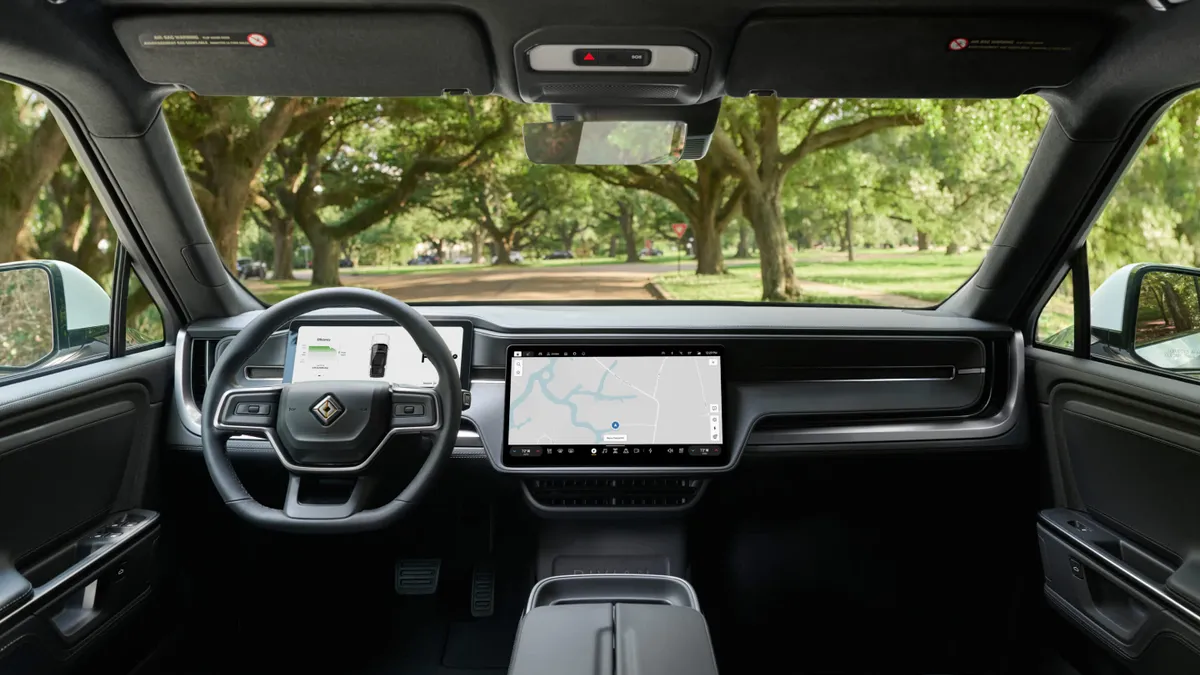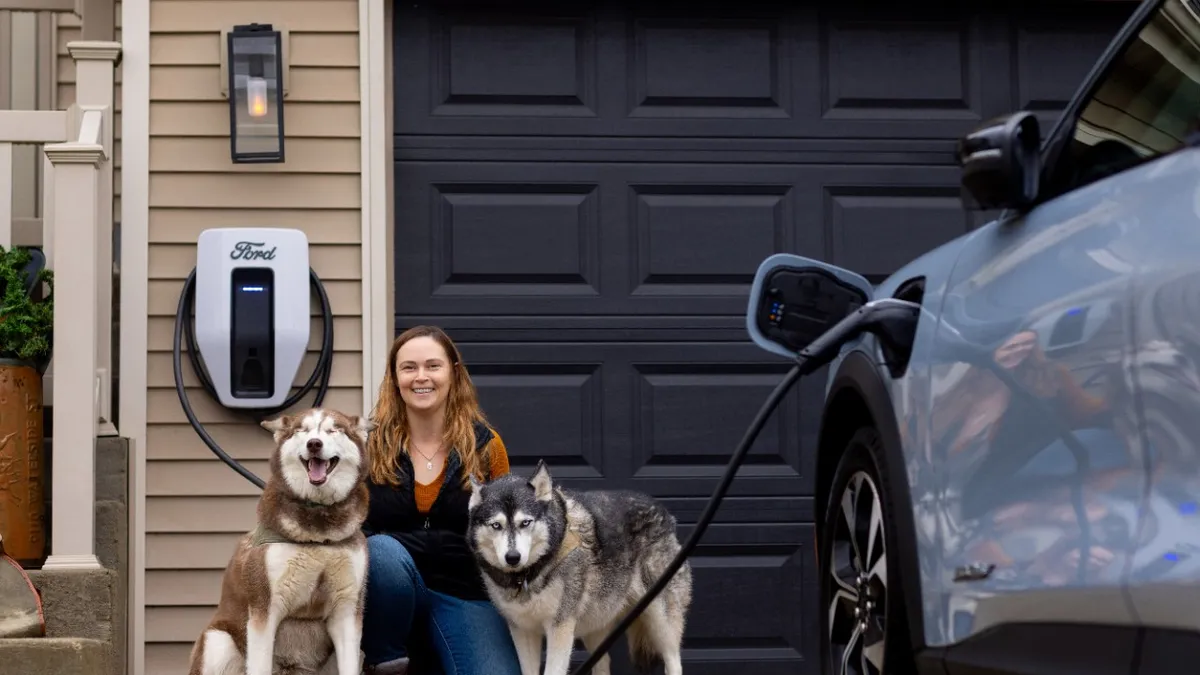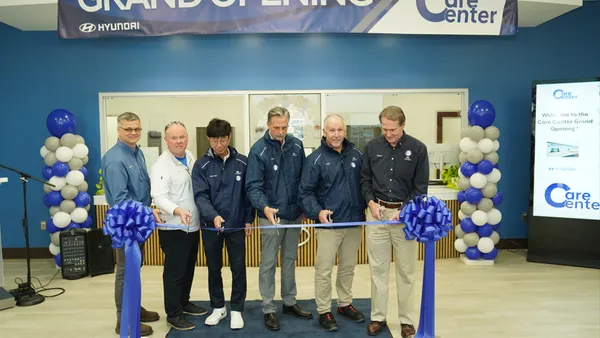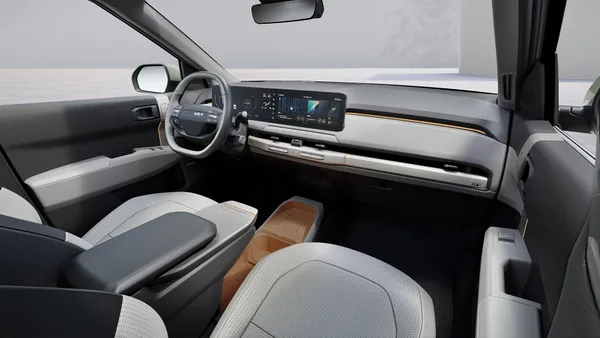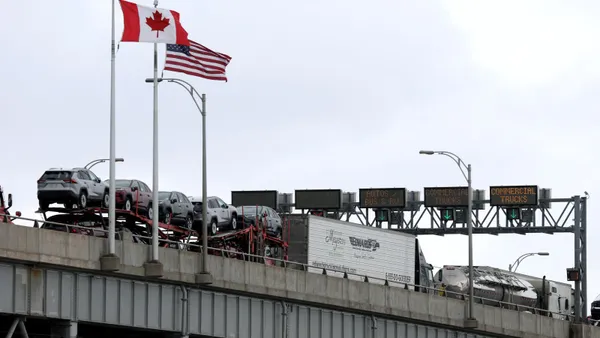Dive Brief:
- Rivian in March deployed a hands-free driving feature, called Enhanced Highway Assist, via a software update for its second generation R1 vehicles, per a company blog post.
- For the initial launch, the automated driving system works on 130,000 miles of roads in the U.S. and Canada, but it will be significantly expanded — including to secondary roads — next year, according to Rivian.
- “We are excited to continue releasing new updates and dramatically expanding our autonomy features,” said James Philbin, VP of autonomy and AI at Rivian, in the blog post.
Dive Insight:
Like other automakers working on autonomy, Rivian has factory-equipped its vehicles with an updated suite of hardware and sensors capable of supporting self-driving technology in the future. Rivian’s Enhanced Highway Assist feature is part of that roadmap.
When Rivian unveiled its Gen 2 R1 platform vehicles in June 2024, the automaker highlighted a new zonal electrical architecture, compute and autonomy platforms. The zonal architecture reduces the number of ECUs from 17 to 7, which eliminates roughly 1.6 miles of wiring from each vehicle.
“Everything on our Gen 2 roadmap is capable with the hardware on our vehicles today,” Philbin said in the blog post.
Rivian’s autonomous driving technology stack includes three core elements — 11 cameras and five radar units and dual Nvidia Drive Orin processors capable of performing 200 trillion operations per second. Rivian says the updated system delivers 10 times more compute power that its previous one.
“For most owners, their R1 Gen 2 will be the most powerful computer that they own,” said Philbin.
The cameras were developed in-house and have the highest resolution of any vehicle in North America, according to Rivian. The front imaging radar on Rivian’s next-gen R1 vehicles can detect objects up to 1,000 feet away.
The camera and radar data are combined in real-time using sensor fusion to deliver 360-degrees of perception around the vehicle for safe navigation, including for automatic lane changes or reacting to the movement of other vehicles.
Decision making for Enhanced Highway Assist uses AI-powered machine learning algorithms. Rivian said it trained the machine learning models based on the latest research and neural network modules. In addition, the machine learning models are continuously enhanced to get smarter over time using terabytes of data collected anonymously from Rivian vehicles.
The machine learning models are also flexible enough to be used with different camera types and sensor configurations, including variations in hardware placement on the vehicle. This additional flexibility allows Rivian to use it across different models in the future. Updates can also be made based on driver feedback to improve system performance.
Later this year, Rivian plans to expand capabilities of its Enhanced Highway Assist to additional roads in North America. In 2026, the company plans to release a more robust hands-off and eyes-off feature for current Gen 2 vehicles that works under controlled conditions.
Rivian’s Enhanced Highway Assist is classified as Level-2 system by SAE International, meaning that drivers must pay attention to the road ahead and be ready to take control of the vehicle if prompted. Like similar automated driving systems on the market such as Tesla’s Autopilot, General Motors’ Super Cruise and Ford’s BlueCruise, Rivian uses an in-cabin camera monitoring system to ensure that drivers remain focused while the feature is active.



